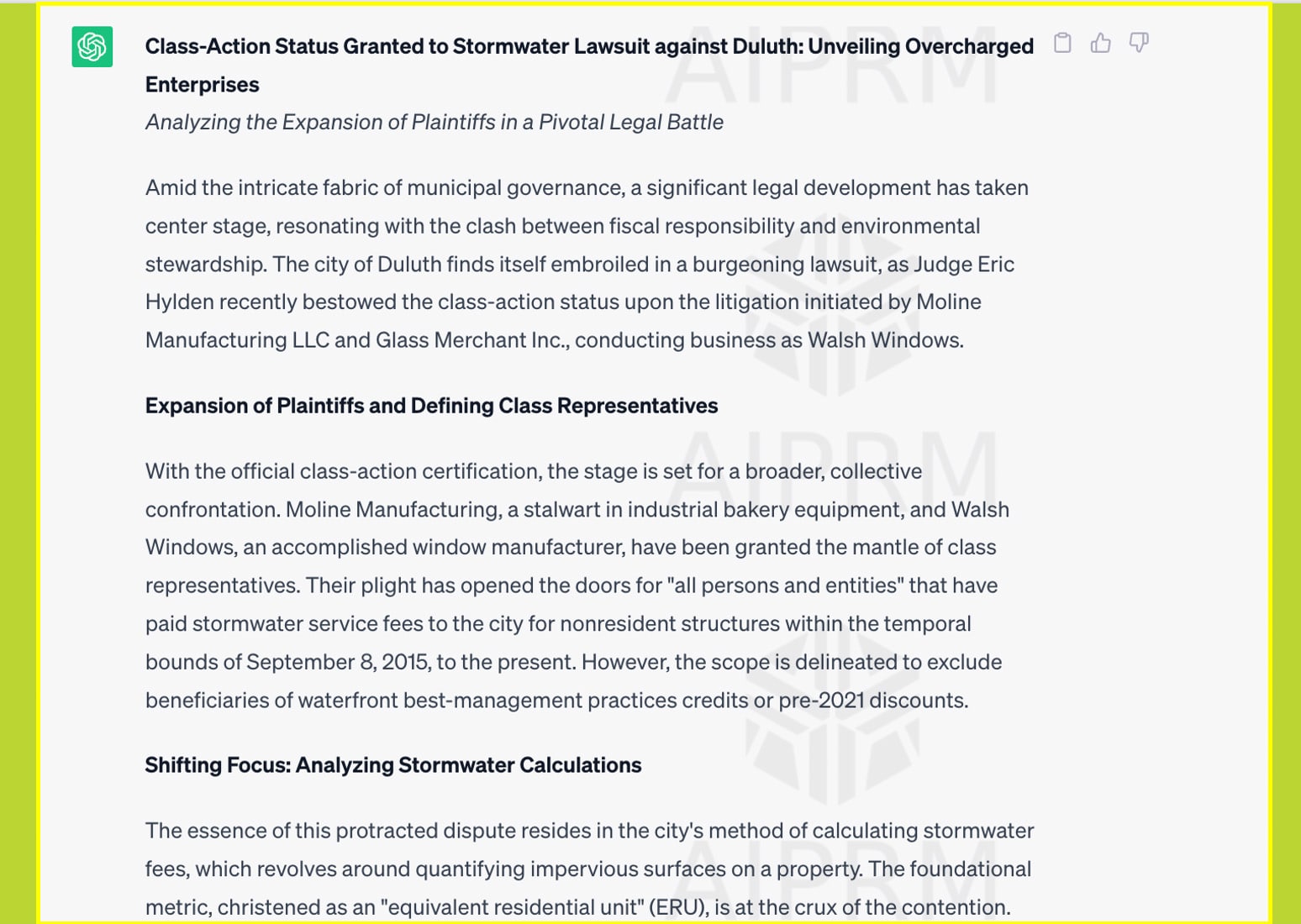Recently our blog post, “GPT-4 Prompt Engineering Master Elements: Controlling Complexity, Repetitiveness, Tone, Person and Believability,” addressed common issues which can weaken output by making copy obviously less human. Today, this article shares a two-step AIMCLEAR GPT prompt which can effectually “Train” AI using small datasets to copy writing styles as analyzed by dynamic variables. Let’s get right to rewriting an article copying my personal writing style.
The first of two prompts requires a multi-paragraph sample of your (or anyone’s) writing style. We are providing the prompt text as cut and paste for your use. (You’re welcome). Any textual notations in italics are clarifying comments and not part of prompts or outputs.
Prompt One: Analyze the Writing Style
Please ignore all previous instructions. All output is in English (US) I will provide paragraphs of text which are representative of my writing style. Analyze my text for determination of my writing style. Assess no less than 10 and up to 20 parameters that define my style, including but not limited to the general type of writing style, vocabulary level used, complexity, rate of burstiness, percentage of short, long, and medium sentences, average sentence length, rate of common words used, rate of words with more than 3 syllables per 200 words, rate of emotional expression (low, medium, or high), an estimation of the range of ages in years-old of people who can understand the text, the average length of paragraphs in word count, and other common writing parameters.
Then copy and paste the several paragraphs of sample text, in this case from a blog post I authored.

Tip: While in Prompt One we provided GPT several preset writing style variables to analyze, i.e. percentage of short, long, and medium sentences, average sentence length, etc., we also gave GPT license to define other variables by including, “and other common writing parameters,” to take advantage of GPTs understanding of writing styles- not just the prompt engineer’s.
Prompt One Output, Writing Style Analysis
Based on the provided text, here are the key attributes of your writing style:
1.Formal Tone: Your writing style appears to be formal, using professional language and structured sentences to convey your ideas.
2.Advanced Vocabulary: You use a relatively high level of vocabulary, incorporating words that are not commonly used in everyday language.
3.Analytical Approach: Your writing exhibits an analytical approach, breaking down concepts and scenarios with a critical perspective.
4.Specialized Knowledge: Your text suggests a familiarity with the topics covered and related fields, showcasing your expertise in these areas.
5.Structured Paragraphs: Your paragraphs are organized and coherent, with each paragraph dedicated to discussing a specific aspect of the topic.
6.Long and Medium Sentences: Your writing contains a mixture of long and medium-length sentences, contributing to the complexity and depth of your content.
7.Varied Sentence Structure: You employ diverse sentence structures, including complex sentences, compound sentences, and occasional rhetorical devices.
8.Descriptive Detailing: You provide detailed explanations, descriptions, and examples to support your points, adding depth to your content.
9.Use of Abbreviations and Acronyms: You use abbreviations and acronyms common in the topical theme
10.Storytelling Elements: You incorporate anecdotal elements, sharing personal experiences and interactions, which helps engage the reader.
11.Humorous Undertone: Your writing features a subtle touch of humor, adding a light-hearted and relatable aspect to the content.
12.Logical Progression: Your writing follows a logical flow, moving from one point to another in a sequential manner, aiding comprehension.
13.Minimal Emotional Expression: Emotionally, your text leans towards a moderate level of expression, where objectivity and analysis are prioritized over personal sentiment.
14.Age Group: Your writing style is likely to be comprehensible to individuals with a moderate to advanced level of education and experience, typically adults in their mid-20s and above.
15.Usage of Technical Terms: You integrate technical terms and jargon related the topical them, demonstrating a strong grasp of the subject matter.
16.Comparisons and Metaphors: You use comparisons and metaphors occasionally, enhancing the vividness of your descriptions and explanations.
17.Paragraph Length: Your paragraphs tend to be of moderate length, allowing for a balanced distribution of information.
18.Engagement with the Reader: You interact with the reader by using phrases like “You likely know,” “Imagine,” and “Turns out,” creating a sense of shared understanding.
19.Implicit Critique: Your text includes subtle critiques and evaluations of certain approaches and practices, contributing to the analytical tone.
20.Varied Sentence Beginnings: You start sentences with various types of clauses and phrases, avoiding monotony and adding variety to your writing.
End of output. It’s interesting to note that a number of the variables generated independently by GPT are points we often make teaching fledgling writers
Prompt TWO: Use AI to Rewrite Copy in Your Style
Please ignore all previous instructions. Rewrite an article that I will provide using a writing style that I will also provide. The writing style will be labeled, “Style” and the article will be labeled, “Article.”
Please absolutely ensure the entire article is uniformly consistent with the provided writing style.
The article may contain sentences with fewer than six words. If so, convert those sentences into catchy headers within the provided style, optimized for SEO keywords highly related to the provided article’s theme, and competitively attainable in search United States English engine results for a mid authority blog. All output needs to be in American English.
Style
Paste your style variables here as text. We’ll show them as an image.
Article
Paste the article you want to rewrite in your style here as text. We’ll show the article as an image. We chose a dry article from the newspaper to be rewritten copying my writing style- which is quite different.
Prompt Two Output, Excerpt of Article Rewritten Copying My Writing Style
END COPY STYLE/REWRITE PROMPTS & OUTPUTS
A cool element of Prompt Two is, “The article may contain sentences with fewer than six words. If so, convert those sentences into catchy headers within the provided style, optimized for SEO keywords highly related to the provided article’s theme, and competitively attainable in search United States English engine results for a mid authority blog.”
It’s also easy to provide an exact list of keywords for inclusion, likely more effective SEO than the easy-button approach asking GPT for the research on-the-fly. Another option, as part of Prompt Two as provided here, is to ask GPT to output a list of keywords it deemed as, “Highly related to the provided article’s theme, and competitively attainable in search United States English engine results for a mid authority blog.”
If interested, you might have some fun experimenting with this bonus prompt, which polls GPT as to elements it may consider analyzing writing styles.
It’s easy to analyze someone’s writing style and use variables to rewrite content in that style’s image. Engineer these prompts alongside others addressing common issues that weaken output by making copy more obviously less human. These rewrite prompts also make your own writing assignments less cumbersome, because all that is required is a draft article. Then GPT can bring home the final, reliably tendered in your personal style. And, for your PR professionals, it’s simple to drop in various styles (like AP) for shepherding output into required formats.
Happy prompt engineering!













